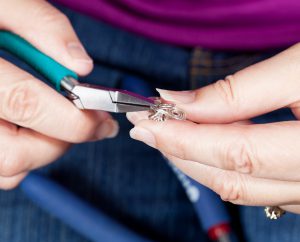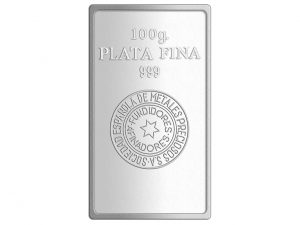Bullion Buying Guide For Beginners
 Bullion is one of the basics when it comes to jewellery making. So if you’re just starting out, you’ll need to become familiar with the ins and outs, such as the different types of bullion, how to buy bullion and understanding which are key for your upcoming projects. Once you’ve finished reading our bullion buying guide, you should be feeling confident enough to invest in some of your own. Starting simple, find out what bullion actually is and more below.
Bullion is one of the basics when it comes to jewellery making. So if you’re just starting out, you’ll need to become familiar with the ins and outs, such as the different types of bullion, how to buy bullion and understanding which are key for your upcoming projects. Once you’ve finished reading our bullion buying guide, you should be feeling confident enough to invest in some of your own. Starting simple, find out what bullion actually is and more below.
What is bullion?
First things first, what is bullion? In its simplest form, any type of precious metal can be defined as bullion. And as standard, most bullion is recognised as being at least 99.5% pure. In a bar form, it is also often used as legal tender, frequently held as reserves by banks or investors. However in terms of jewellery, there are many different types of bullion that can be used in your designs, which we’ll delve into for you.
Key types of bullion in jewellery making
1. Wire
Arguably one of the most used types of bullion within the jewellery making sphere, wire is considered a key from of bullion. An essential component of any jeweller’s kit, wire can be found in a number of different alloys, shapes and dimensions. Find out more about the basics of jewellery making wire for a deeper dive into this particular form of bullion.
2. Sheet
Next up in our bullion buying guide, we’ll talk you through sheet metal. A versatile product, sheet metal can be used in a number of different ways. It can be cut down to your exact requirements, bent to form rings and bangles or textured to create unique pendants and charms. For more on how to use sheet metal in your designs, read our blog on how to work with sheet metal.
3. Solder
Solder is also considered one of the most essential types of bullion within jewellery making. Most projects require some form of solder to ensure it is completed to the best standard. Much like the above, there are a range of different kinds of solder to choose from. So if you’re wondering which solder wire to use or which soldering paste is best, a key piece of advice is to match the alloy to your design as closely as possible. And for more information on getting to grips with the technique, check out our soldering tutorial round up for beginners.
4. Grain & Casting Pieces
Although grain and casting pieces might be something used more by jewellers at an advanced level, it is still worth learning about as a form of bullion. Its primary use is for casting jewellery with moulds or by using the lost wax carving technique. If you’d like to learn more about this, refer to our what is the lost wax casting process blog.
And finally in our bullion buying guide, we have gold and silver bars. Considered as more of an investment piece rather than a product used in jewellery making, they’re still worth mentioning down to the fact that they’re often regarded the traditional form of bullion. In addition to this, gold and silver bars are frequently used as wedding or wedding anniversary gifts, so if you’re wondering where to get them from, try our range at Cooksongold.
How to buy bullion
So now you know the key different types of bullion, next up is purchasing. If you’re new to jewellery making, you might be wondering how to buy bullion. The first step is identifying which kind of bullion you think you’ll need for your projects. If you want to try your hand at making a ring, you’ll most likely need some sheet metal and solder. Looking to create your own stone settings? Pick up a range of different kinds of wire and solder so you’re all set to design exactly what you want.
Whatever kinds of jewellery aspirations you have, find all the bullion you need in one easy, accessible place at Cooksongold. Or for more jewellery making guides to boost your knowledge, check out our Beginners’ Guides while you’re here.
The post Bullion Buying Guide For Beginners appeared first on The Bench.
source https://www.cooksongold.com/blog/beginners-guides/bullion-buying-guide-for-beginners

Comments
Post a Comment